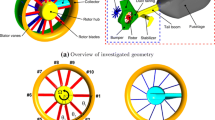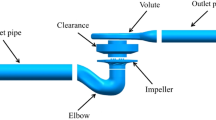Abstract
In naval warfare strategy, different scenarios are considered according to vessels involved and most of the time their acoustic performances determine the advantage of one over the other. To succeed, the vessel needs to be the most silent while being the most efficient in detecting the others. That is why naval reducing both the ship far field radiated noise and the self noise affecting sonar array efficiency is a permanent matter of concern for the naval industry. Several phenomena have to be considered to describe far field radiated noise and self noise. This study focuses on contributions generated by flow noise phenomena induced by Turbulent Boundary Layer (TBL) along the hull. In order to fulfil contractual commitments and design requirements, naval industry has to know how to model these phenomena to predict acoustic performances as accurately as possible. Nowadays, several models enable to describe TBL excitation from which it is possible to calculate vibro-acoustic response by different ways according to the phenomenon and the frequency range considered. In this study, flow noise phenomena induced by TBL in the hydro-acoustic studies of naval vessels and Chase model [3] are first described in general. Then, different modelling techniques of noise prediction are especially introduced for TBL excitation generating self noise on the sonar array located inside a cavity [1, 7] and far field radiated noise through external structure response. To illustrate the problems the naval industry has to deal with, some practical examples are discussed.
Access this chapter
Tax calculation will be finalised at checkout
Purchases are for personal use only
Similar content being viewed by others
References
M. Aucejo. ‘Vibro-acoustique des structures immergées sous écoulement turbulent’, PhD thesis, INSA Lyon, 2010
M. Aucejo, L. Maxit, J.L. Guyader, Improving the Patch Transfer Functions approach for fluid-structure modelling in heavy fluid. ASME 134, 051011 (2012)
D.M. Chase, The character of the turbulent wall pressure spectrum at subconvective wave numbers and a suggested comprehensive model. J. Sound Vib. 112(1), 125–147 (1987)
S.A. Hambric, Y.F. Hwang, W.K. Bonness, Vibrations of plates with clamped and free edges excited by low-speed turbulent boundary layer flow. J. Fluids Struct. 19(2004), 93–110 (2004)
A. Iddir. ‘Effets d’une couche limite turbulente hydrodynamique sur le comportement vibro-acoustique d’une plaque bafflée couplée à une cavité rectangulaire’, PhD thesis, Aix-Marseilles II University, 1997
Y.-T. Lee, W.K. Blake, T.M. Farabee, Modeling of wall pressure fluctuations based on time mean flow field. J Fluids Eng. 127(2), 233–240 (2005)
L. Maxit and C. Audoly. ‘Hydrodynamic noise prediction in a Sonar cavity : injected power estimation from the wavevector—frequency spectrum of turbulent wall pressure’, Proceedings of Novem 2005 (Saint Raphael)
L.J. Peltier, S.A. Hambric, Estimating turbulent-boundary-layer wall-pressure spectra from CFD RANS solutions. J. Fluids Struct. 23, 920–937 (2007)
Author information
Authors and Affiliations
Corresponding author
Editor information
Editors and Affiliations
Rights and permissions
Copyright information
© 2015 Springer International Publishing Switzerland
About this paper
Cite this paper
Chevalier, F., Audoly, C. (2015). Turbulent Flow-Induced Self Noise and Radiated Noise in Naval Systems—An Industry Point of View. In: Ciappi, E., De Rosa, S., Franco, F., Guyader, JL., Hambric, S. (eds) Flinovia - Flow Induced Noise and Vibration Issues and Aspects. Springer, Cham. https://doi.org/10.1007/978-3-319-09713-8_10
Download citation
DOI: https://doi.org/10.1007/978-3-319-09713-8_10
Published:
Publisher Name: Springer, Cham
Print ISBN: 978-3-319-09712-1
Online ISBN: 978-3-319-09713-8
eBook Packages: EngineeringEngineering (R0)




